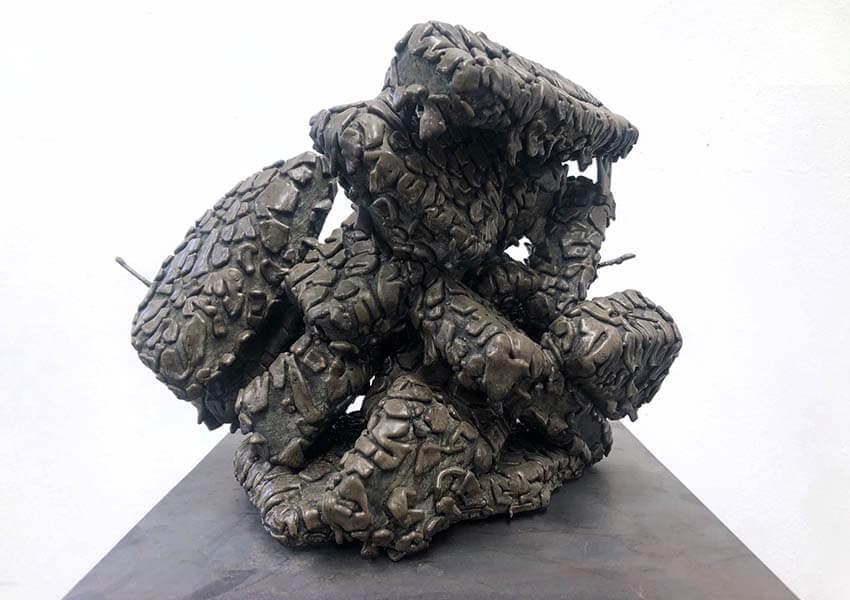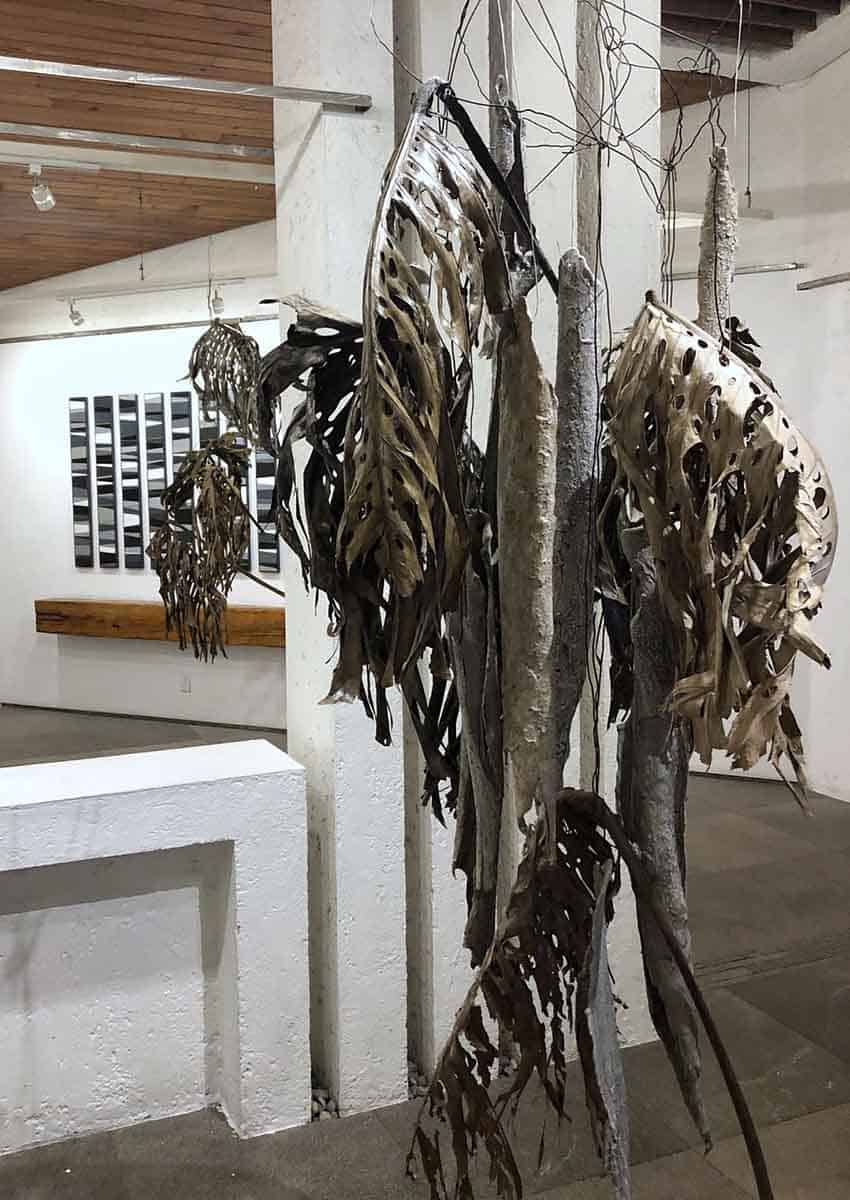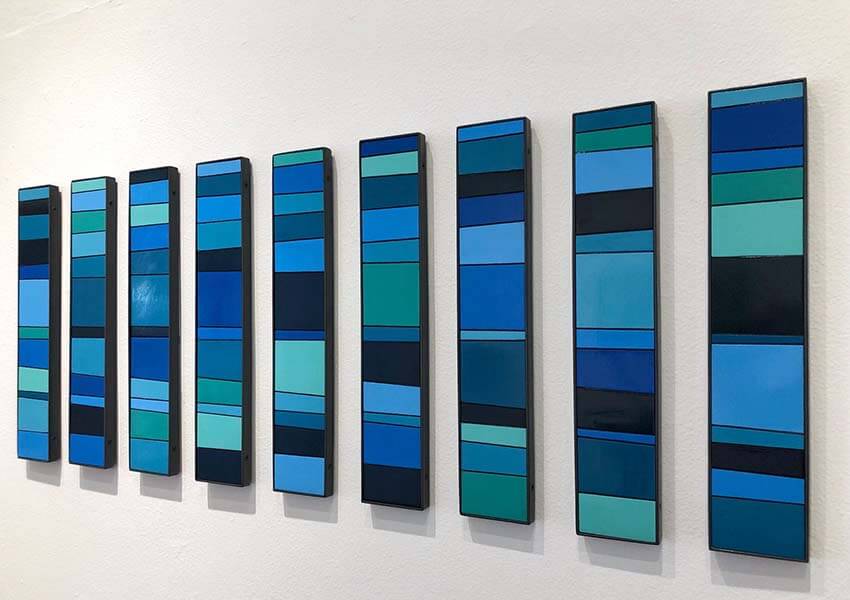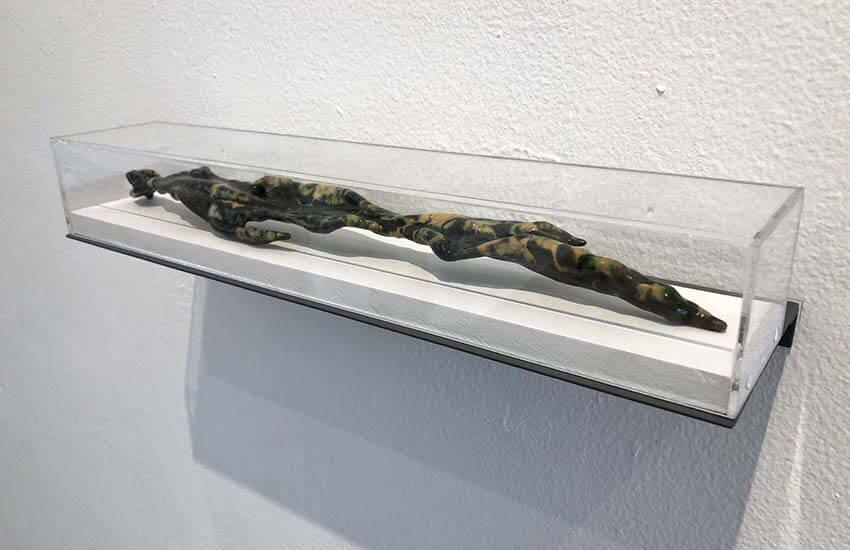An exhibition in Mexico City by an artist who moved to Mexico from England nine years ago reflects his interest in the human imprint on the environment and its impact on the natural landscape.
“The Weight of Gravity” is the first solo show in Mexico by Ian Johnson, who lives and works in San Miguel de Allende, Guanajuato, and is part of his exploration into how humanity impacts nature.
Johnson’s work started to shift more fully in this direction, he says, after a chance encounter in the Sierra Nevada of northern Colombia.
An indigenous Kogi man and child approached him, offering him an unusual seed from a regional plant. Johnson doesn’t know how the man knew, but he had been collecting seeds for several weeks as he traveled through Colombia and had been incorporating them into his artwork.
The language barrier kept them from communicating fully, but this interaction set him on a path to look more closely at the Kogi culture, which exposed him to a community of people deeply committed to Mother Earth, of whom the Kogi believe they are the protector.
“They have kept their privacy and avoided all but minimal contact with the outside world until fairly recently,” Johnson says. “In the early 1990s, they wanted to put their message out to the world.”

According to Johnson, the Kogi view themselves as guardians of the world.
“In the lifestyle they live and in their connection with nature, the harmony they strive for, they have been seeing over the decades a change in the environment,” he says. “The glaciers are melting, the rivers aren’t flowing as fast, the lakes aren’t filing up — and they can see that it’s out of balance.”
Already, much of Johnson’s work had dealt with the impact of humans on the environment, either via the blatant impact of industrialism or the subtler changes and shifts in the natural world. But this chance encounter crystallized much of his focus, he says.
“I think, really, from that point, that kind of tied in to a lot of the impetus for where my work was going. It’s always kind of held a focus around nature and the landscape, and I think that helped to really define it for me at that point.”
Johnson works with industrial materials like steel and spray paint alongside more natural mediums like clay and found objects in nature. He has divided the show into three sections, each representing a different element of the tug-of-war between humans and nature.
The focal point of the exposition’s first section, Calendar, is a piece representative of the passage of time and our conception of it. It consists of 12 panels of birch wood inlaid with colored bronze bars. Each panel is mounted in fabricated steel frames.

The 12 panels represent months, and the thin bronze wires that connect them days.
“It comes out of the way we record data,” he says, “whether it be measuring sticks along the sides of rivers to measure the level of the water [or] the way we chart things and make graphs of things. They are obviously abstract, but I like the element; it’s kind of an abstract record of data.”
In the second section, Johnson uses a combination of natural and industrial materials to focus on constructed nature. One of the most striking pieces is Landscape Painting, which uses vinyl and enamel acrylic spray paint on stainless steel panels to recreate a leafy canvas of greens, whites and blacks.
“That work originated standing in front of the jungle. I was in Peru,” he says, “… and I got this experience and opportunity to stand at the side of the river, staring at the jungle canopy in front of me. It’s incredibly imposing, and I was aware that what this experience was, was that the jungle was almost acting as a mirror; it was reflecting all my own fears and insecurities about stepping into it.
“The jungle itself was fine, doing its thing. I was the foreigner in that environment, and it was very interesting to relate to it in that sense.”
The third section deals with water as an emotional and physical force of nature. The main piece, Water Elements, is a nine-panel wall painting with similar attributes to The Calendar, also about the theme of measuring data.

The piece entitled Geo-Therm — created from glazed ceramic and steel on a steel base — gives a sense of erosion and transformation over millennia, the way water erodes a rock face across the centuries.
Throughout the exhibit, there are sculpture pieces blended in, including many leaf sculptures that were the impetus for the collection’s title.
“What I did was take some of the leaves that I’ve been working with, and I went in every other day, dipping them in liquid clay and leaving them to dry; and then I would go back in and dip them again,” he explains.
“In the course of about two months, these leaves were dipped in and out of the bucket of liquid clay, and they built a surface around them,” he says. “That was really where the title came from because I like the idea that it was really the weight of gravity that was forming on these leaves. It was transforming the shape slightly every time they were dipped, and it was through that that they took their shapes.”
Johnson studied at the Jacob Kramer College of Art in Leeds, England, (now Leeds Arts University) and Goldsmiths College at the University of London. In 1991, he graduated with honors with a Bachelor of Fine Arts and received the European Union’s Erasmus grant to study at L’École des Beaux-Arts in Montpellier, France. He was also the recipient of a young artist work grant with the Castello di Rivoli Museo d’Arte Contemporanea in Torino, Italy.
In 1993, he traveled to Latin America for the first time with four other artists and musicians.

“We were there as a creative group, to look at how people were using creativity in programs or dealing directly with children. It opened my eyes to Latin America, and that was my first encounter with it. I think from then I have had this fascination with and deep admiration for it.”
Johnson met his wife in Oaxaca, and they decided to return to Mexico with their two-year-old daughter in 2012 to have a traveling adventure before she started school. Their plans for a one-year stay turned into nine, and now Johnson works out of his studio in San Miguel de Allende and exhibits both in Mexico and abroad.
His hope for this latest show in Mexico City is that the artwork will impact the viewer enough to stop and really think about what they are looking at and how it relates to the space around it.
“Maybe [they will] consider the relationships going on between the works, and [it will] create that moment of reflection because I think that’s the point where art can actually step out to impact people,” he says.
• The “Weight of Gravity” is currently on display at Gallery 557 of the Centro Cultural Pedregal in Mexico City until November 19. Viewing hours are from 10 a.m. to 6 p.m. Monday–Sunday. You must make a reservation in advance.
Lydia Carey is a regular contributor to Mexico News Daily.
